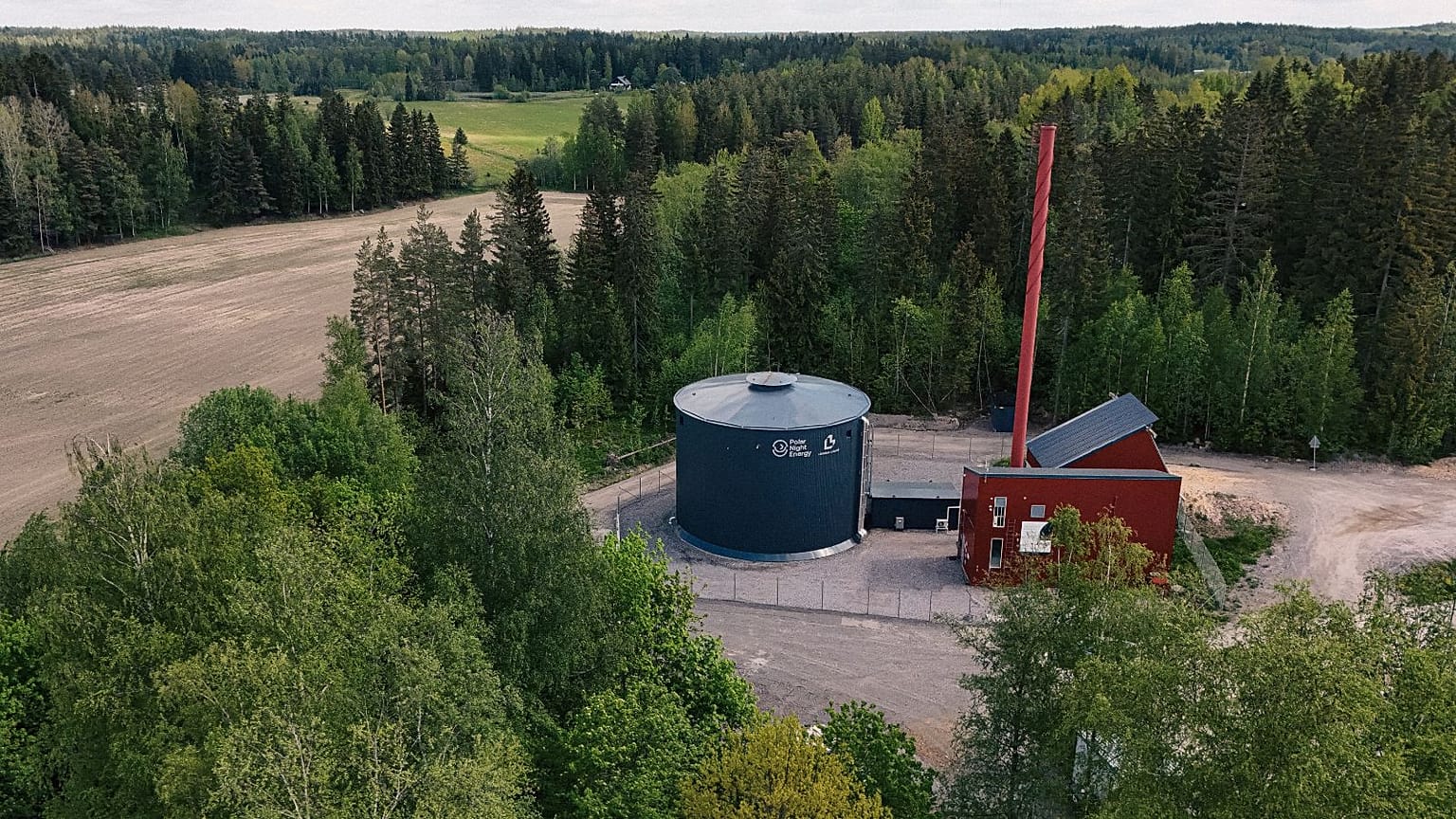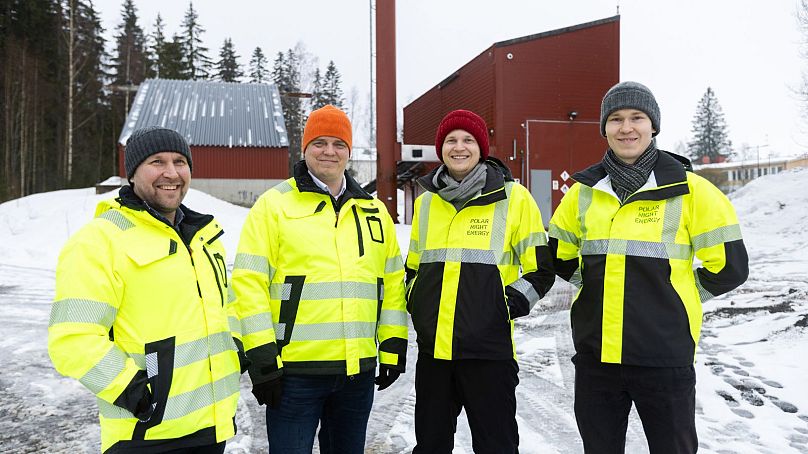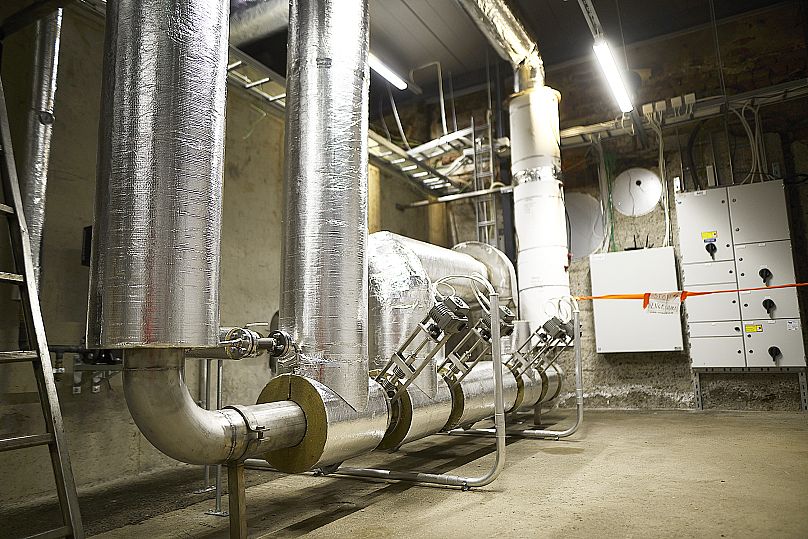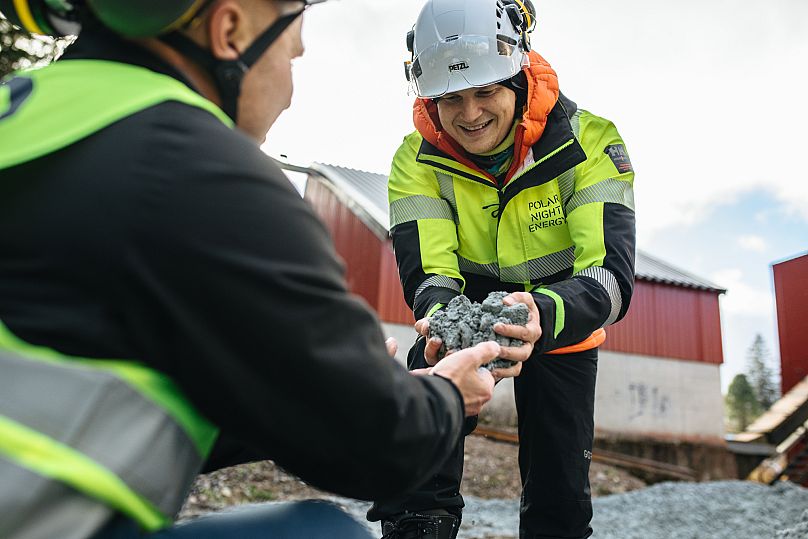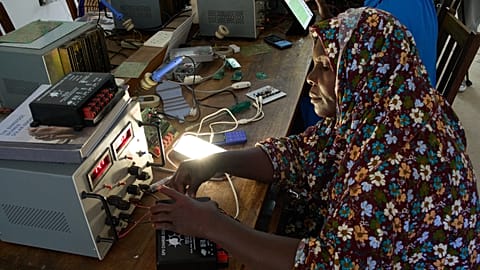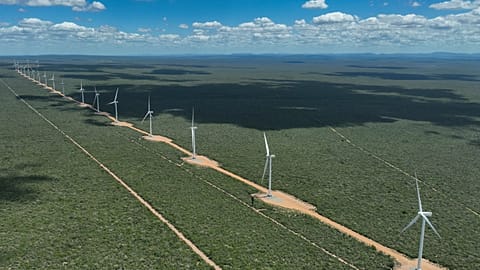The 15 metres wide battery can store a month's heat demand in summer - how does it work?
The world’s largest sand battery has started working in the southern Finnish town of Pornainen.
Capable of storing 100 MWh of thermal energy from solar and wind sources, it will enable residents to eliminate oil from their district heating network, thereby cutting emissions by nearly 70 per cent.
“Our goal is to be climate neutral by 2035, and the sand battery is a major step toward that,” says Mikko Paajanen, CEO of Loviisan Lämpö, which runs the district heating network.
The industrial-scale solution from Finnish company Polar Night Energy is now the primary production plant for the network. The consumption of wood chips is set to drop by around 60 per cent as a result, while the existing biomass boiler will continue to serve as a backup and support the sand battery during peak demand periods.**
Sand batteries are getting bigger in Finland
The new 1 MW sand battery has a precursor. In May 2022, Polar Night Energy rigged a smaller design to a power station in Kankaanpää town.
Launched just as Russia cut off gas supplies in retaliation for Finland joining NATO, the project was a timely example of how renewable energy could be harnessed in a new way.
Euronews Green previously spoke to the young Finnish founders, Tommi Eronen and Markku Ylönen, who engineered the technology.
“We were talking about how - if we had the liberty to design a community for ourselves - how could we solve the energy problem in such a confined environment?” Markku said of the inspiration behind Polar Night Energy in 2018.
“Then quite quickly, especially here in the north, you run into the problem of energy storage if you're trying to produce the energy as cleanly as possible.”
The friends started playing around with ideas, landing on sand as an affordable way to store the plentiful electricity generated when the sun is shining, or the wind blowing at a high rate.
Finding a way to store these variable renewables is the crux of unleashing their full potential. Lithium batteries work well for specific applications, explains Markku, but aside from their environmental issues and expense, they cannot take in a huge amount of energy.
Grains of sand, it turns out, are surprisingly roomy when it comes to energy storage.
At 13 metres high and 15 metres wide, the sand battery in Pornainen is around 10 times larger than the one at Vatajankoski power plant in Kankaanpää. Polar Night Energy also previously connected a pilot plant to the district heating network of Tampere city.
So how do sand batteries work exactly?
It’s quite a simple structure to begin with, Polar Night Energy said of its prototype. A tall tower is filled with low-grade sand and charged up with the heat from excess solar and wind electricity.
This works by a process called resistive heating, whereby heat is generated through the friction created when an electrical current passes through any material that is not a superconductor. The hot air is then circulated in the container through a heat exchanger.
The sand can store heat at around 500C for several days to even months, providing a valuable store of cheaper energy during the winter. When needed, the battery discharges the hot air - warming water in the district heating network. Homes, offices and even the local swimming pool all benefit in Kankaanpää, for example.
“There’s really nothing fancy there,” Markku says of the storage. “The complex part happens on the computer; we need to know how the energy, or heat, moves inside the storage, so that we know all the time how much is available and at what rate we can discharge and charge.”
How is the sand battery serving people in Pornainen?
Having refined its charging algorithms, Polar Night Energy has now successfully scaled up the storage tech in Pornainen.
“This project has gone very smoothly," says Mayor of Pornainen Antti Kuusela.
Many of the town's buildings, including the comprehensive school, town hall, and library, rely on district heating.
"Pornainen wants to be a front runner in sustainable energy solutions, and we welcome all innovations that support that goal. One of the key targets in our municipal strategy is carbon neutrality, and the sand battery plays an important role in achieving it."
In total, the sand battery is expected to knock off 160 tonnes of carbon dioxide equivalent emissions per year.
The battery’s thermal energy storage capacity equates to almost one month’s heat demand in summer and a one-week demand in winter in Pornainen, Polar Night Energy says.
Is sand a sustainable material?
“We wanted to find something that can be sourced nearly everywhere in the world,” Markku said. But is sand as ubiquitous as we might think?
Demand for the construction material is set to soar by 45 per cent in the next 40 years, according to a recent Dutch study. Building sand is typically extracted from rivers and lakes, and ‘sand pirates’ are speeding up its loss from these ecosystems.
But as far as the Finnish engineers are concerned, it doesn’t really matter where the sand comes from. Though builders’ sand was used initially (to limit transport emissions), sand batteries work with any sand-like material that has a high enough density, within certain thermodynamic parameters.
In Pornainen, Polar Night Energy has found a sustainable material in crushed soapstone; a by-product of a Finnish company’s manufacture of heat-retaining fireplaces.
"Tulikivi is a well-known and traditional company,” says Naskali. “The soapstone they use is a very Finnish thing.”
"We always choose the thermal energy storage medium based on the customer's needs. Examining and testing different materials is crucial for us to use materials that are suitable in terms of properties, cost-effectiveness, and promotion of circular economy," she adds.
Polar Night Energy has big ambitions to take its technology worldwide, and is currently in "active discussions" with both Finnish and international partners. Earlier this spring, the company announced a pilot in Valkeakoski to explore the conversion of stored thermal energy back into electricity.
As Markku told us back in 2022, “we want to build a hundred times larger storages around the world as fast as possible.”















